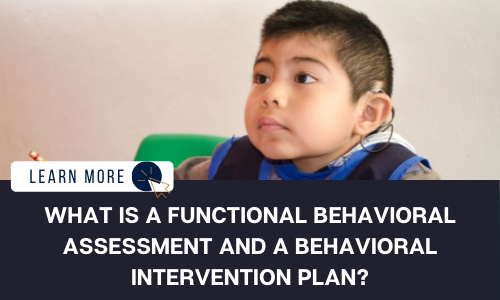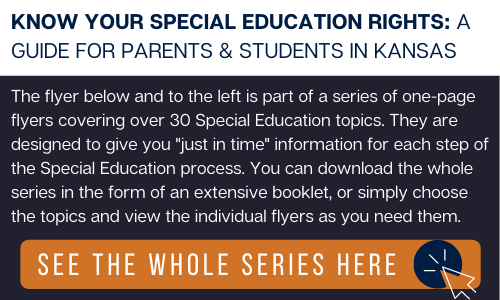What is a Functional Behavioral Assessment (FBA) & a Behavioral Intervention Plan (BIP)?
 |
 |
PDF Version: Full Guide of all 30+ Flyers (Compiled as a Booklet)
Functional behavioral assessments (FBA) and behavioral intervention plans (BIP) are for students who have challenging behaviors.
What is an FBA?
A functional behavioral assessment (FBA) is used to figure out why your child behaves the way he or she does, what your child gets from that behavior, what triggers your child’s behaviors and what supports your child might need. This can be done as part of your child’s evaluation for an IEP. If your child already has an IEP, you can ask for an FBA if your child’s behaviors are making it hard for them to learn. Request this from the principal and IEP team. Do this in writing.
The school can also ask for the FBA. They will let you know if they want to do this.
What is included in an FBA?
• The problems that your child is having
• When these problems happen
• What may be making these behaviors happen
• How to reduce or stop the behaviors from happening
This information should be gathered by looking at your child’s records, observing your child, and through testing. The school may ask you to fill out a questionnaire about your child’s behaviors. Parents often do not see themselves as part of the IEP team. They view the school as the IEP team. You know your child best and your input is very important. The school should make a written summary of the results of the FBA.
What is a BIP?
A Behavioral Intervention Plan (BIP) is a plan for the school to follow to help your child learn and stay in his or her current educational setting. It is best practice for an FBA to be done before a BIP is written. If your child is suspended, a BIP has to be created. If your child already has a BIP, it must be reviewed. The BIP should address behaviors to prevent future suspensions.
If the school does not bring up the BIP, you should ask for it. Do this in writing.
What is included in a BIP?
Not every BIP looks the same. You can look up examples on the internet. It should include things like:
•Information about your child.
•Target behaviors - these are descriptions of behaviors that are causing issues at school.
•Replacement behaviors - these are the behaviors the team wants to see.
•Your input - you are part of the team.
•Your child’s input if you think this is a good idea.
•Interventions - things the school will use if the behaviors happen.
•Things the team will track to know if the behaviors are getting better.
Sources & Additional Resources
Kansas Special Education Process Handbook, Chapter 3. Kansas State Department of Education.
Disclaimer: This fact sheet is not intended to provide specific legal advice. If you need legal advice, please contact an attorney. Only an attorney can give you specific legal advice based on your particular situation. We try to update our materials regularly, but the law can change frequently. This publication is based on the law at the time that it was written. Future changes in the law could make information in this fact sheet inaccurate.
.png)





